L’Anatomia DEL CAVALLO – an exhibition of works by artist Dan Vezentan – is an homage to the horse, the animal that for centuries has represented an economic force, a means of transportation, or an agricultural instrument, before being simply abandoned in the industrial revolution. The artist pays his homage through an investigation of the relationship between humans and animals, the game of superiority between these species, and the representation of animals in art.
The exhibition’s title, L’Anatomia DEL CAVALLO, is inspired by the title of the first anatomy textbook dedicated to a non-human species, Carlo Ruini’s L’Anatomia del Cavallo, Infermita et Suoi Rimedii (Venice, 1598). Through this reference, Dan Vezentan dives into history, into the time when, in anatomy, human curiosity and the human gaze become decentered, pointed towards something other than themselves. Through this exhibition, the artist attempts to inspire a return to these “inferior” beings and to adopt a non-anthropocentric approach. Even though I have encountered animals in the works of other contemporary artists, like Damien Hirst or Maurizio Cattelan, an anatomical approach to and a rustic perspective on animals are less employed in the visual arts. It seems that Dan Vezentan wants to do justice to the horse, this majestic animal that has lost their importance with the modern age, attempting to portray them literally, almost primitively.
During the last few decades, researchers have noted a shift in the perspective on and representations of animals in art, literature, etc. We are beyond the age of fables and Orwell’s Animal Farm, in which animals are personified to represent human behaviors. This practice of using images of animals as metaphors has become so common that most of us view these beings as symbols for human behaviors and interactions by default. But with the worsening ecological crisis and the extinction of more and more species comes the urgency for change, a change not just within interspecies interaction but also in the way we perceive animals, seen until now as inferior. From mere means of condemning or praising certain human qualities, animals seem to finally be taken seriously, to finally represent what they really are. One can see this in the scientific and academic environment, where new concepts are being circulated in an attempt to outline a shift in our awareness of the role animals play in our lives. Concepts like the zoopolis, zoontology, zoopoetics, or humanimality are have spread within the socio-political discourse around animal rights, promoting a non-hierarchical approach.
The shift in how animals are depicted in art and literature is encapsulated in the recent concept of zooësis, developed and promoted by Una Chaudhuri, a professor and researcher at New York University. In her 2014 book The Stage Lives of Animals: Zooësis and Performance, Una Chaudhuri defines zooësis as the pressing need to represent animals as what they are, dispelling fabulations about what human behavior they might signify. Chaudhuri argues that the core of zooësis is the liberation of animals from the limits of metaphor and their placement within the literal, within their immediate reality. In the exhibition L’Anatomia DEL CAVALLO, Dan Vezentan not only, indirectly, exemplifies the concept of zooësis but also brings up the relation between humans and animals, attempting also to portray humanity a little.
There is a clear contrast between the works: the realistic anatomical drawings of a horse and the complex, postmodern, and imposing installation showing a disproportional and suggestive representation of a horse, but also of a cyclical drinking water system for animals. The blue-ink drawings of the dissected horse, turned inside out (inspired by anatomy textbooks that represent an animal for what they really are), are as striking as the central installation is full of symbolism. The exhibition room at Kunsthalle in Timișoara has a large support beam that is part of the installation and that through a revealing metonymy becomes the horse’s spinal column, encapsulating the animal’s oversized image. Bridled and saddled, the beam continues into a waterfall, forming a continuous watering system, a kind of pragmatic architecture inspired by animal feeding systems used in the countryside. Made from old tractor, plow, and seed drill tires – technologies that led to the obsolescence of draft animals – the hydration/watering system evokes the urgency of taking a responsible attitude towards animals. The troughs and harnesses that seem to tame and subdue the modern material rather than the wild animal – a means traditionally used to tame a horse is now used to tame the advance of technology – open up the debate between tradition and modernity and especially between animal and human, implyinh the need for harmony between the two species.
However, despite all the comprehensive studies they could be referencing, the anatomical sketches, which show the clear corporeality of a horse, are violently reminiscent (perhaps with a more subdued violence because of the blue, which makes the drawing seem clean, unstained by blood) of images from slaughterhouses. They in fact remind us of the cruel nature of humanity and the placement of animals on an inferior level. The harshness of the drawings is shadowed however by the massive installation and the soothing sound of flowing water, proof of the cyclical nature of life.
Zootechnical/agricultural themes are recurrent in the art of Dan Vezentan, who also explored them in other contexts. In 2018/2019, for the solo show Water, Food, Shelter at MNAC, Dan Vezentan reinterpreted the mechanisms found in rural households, inspired by systems for animal transportation, housing, and feeding, while also exploring the idea of food, surplus, and biological waste. L’Anatomia DEL CAVALLO is like a continuation of this previous exhibition, taking the discussion forward. By exploring the universe of animals, Dan Vezentan initiates a dialogue around the way we relate to them, questioning human superiority and the need for openness, for an empathetic turn towards other living creatures.
L’Anatomia DEL CAVALLO, Dan Vezentan’s solo art exhibition, took place at Kunsthalle Bega, Timișoara, during 28th of May – 11th of July 2021.
Translated by Rareș Grozea
POSTED BY
Marina Paladi
Marina Paladi is from The Republic of Moldova and is a master's student in Heritage, Restoration and Curation Department at the Faculty of Arts and Design, West University of Timișoara. She is intere...
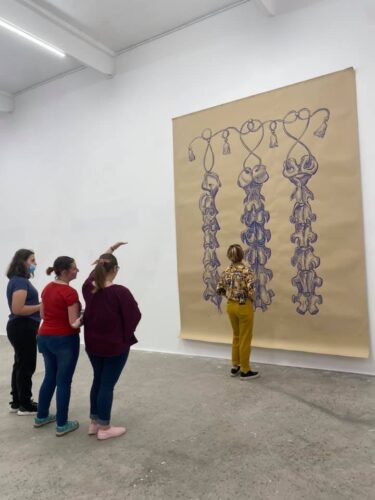
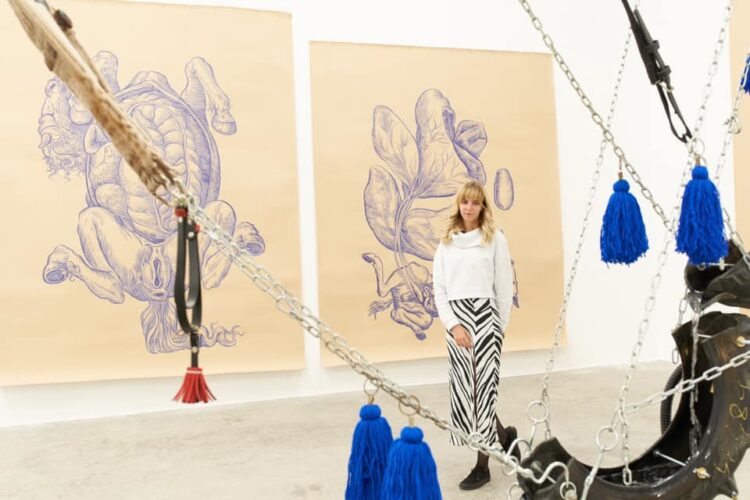
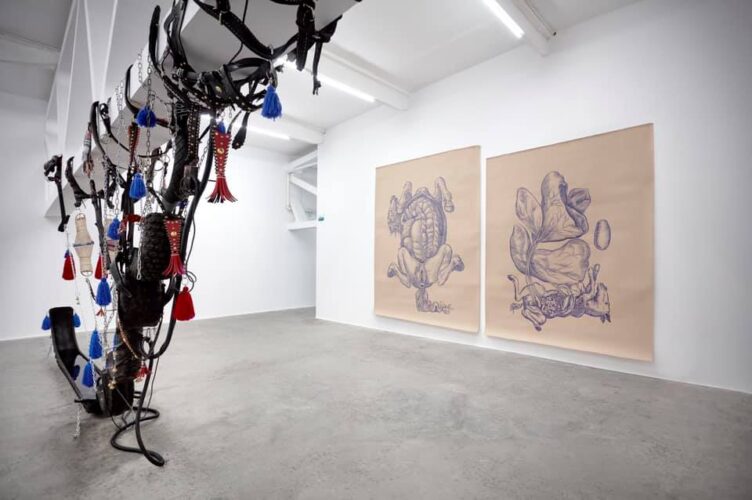
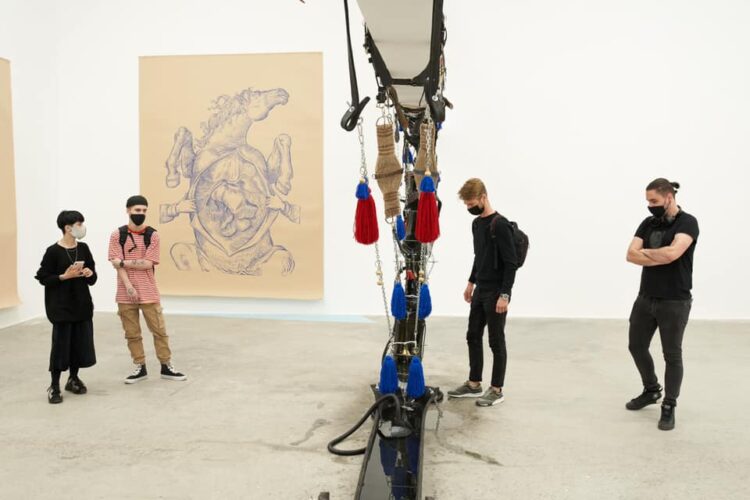
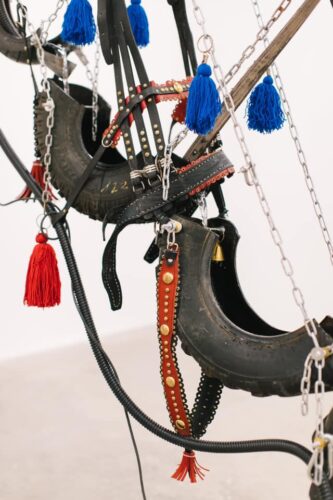
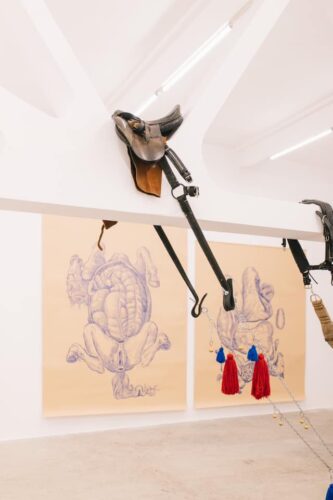
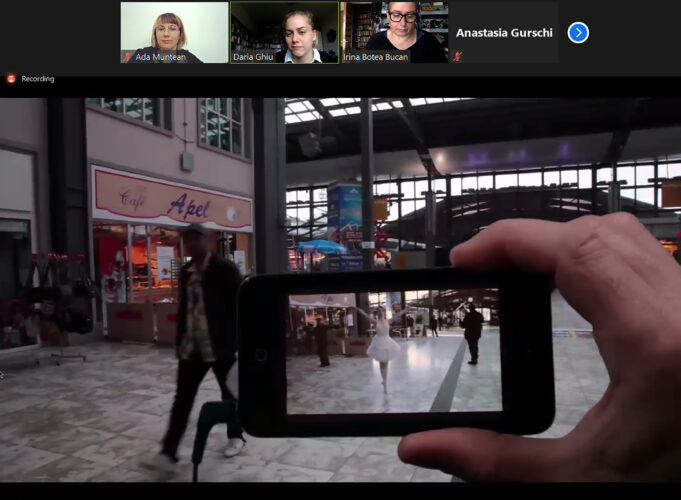

Comments are closed here.